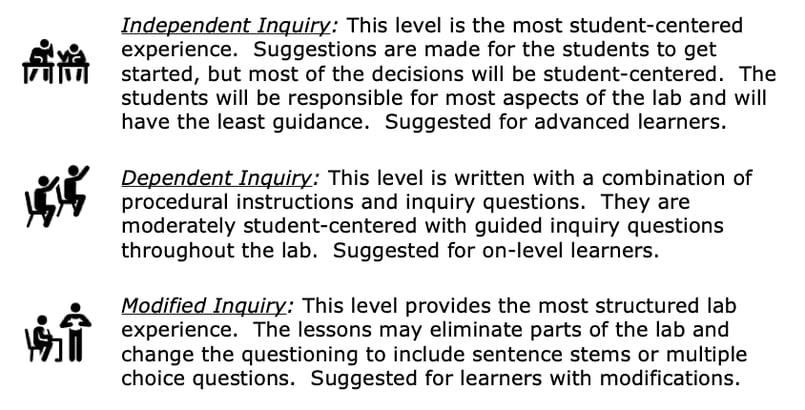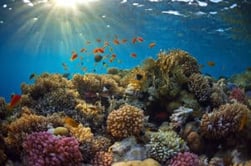Pollination Inquiry Lab
Middle School Inquiry Lab on Pollination
In this lab students will dissect a flower to identify the specialized structures that help a plant successfully reproduce and will observe pollinators in action.
Each inquiry lab will contain an essential question that will drive the lesson and make students think. For this lesson, the essential question is:
- How do the specialized structures of plants increase their chances of reproduction?
BACKGROUND INFORMATION AND MATERIALS LIST:
Students will begin the lab by reading the essential question and background information. This can be done individually, as lab groups, or as a whole class. If you consider lab groups, you also might include some type of whole class formative checks before digging into the lab.

Materials List:
- flower
- appropriate scalpel, scissors, or plastic knife for cutting open flower ovary
- magnifying glass
- paper towels
- colored pencils/crayons
PROCEDURE:
Who doesn’t like a good dissection? For this lab, students will take apart a flower, piece by piece. Before beginning, advise students to carefully follow each step so they don’t accidentally destroy important parts of the flower. It helps to have extra flowers available in case this happens. For some classes, it may be better to work through the step as a whole class.
Before students dive right in, take them outside for a few minutes and have them observe the butterflies or bees. This is a quick observation with the goal of seeing either the bee or butterfly interact with the center of the flower and then travel to several others during that time.
Once you return back to the classroom, follow the steps of dissecting the flower. Students will begin by observing the flower’s physical features before removing the petals. Every structure removed from the flower is placed on the lab sheet for organization and labeling. As students continue to remove every last part of the flower, students are asked to “be the bee” and think about how the shapes or colors of the structures help with pollination.
CHECK FOR UNDERSTANDING:
At this point in the lab, students will be checked for understanding by answering questions about their findings. Here is one that comes with the lab:
- Based on your observations, do the specialized structures of the flowers work to attract pollinators? Why or why not?
CONCLUSION
Students will go back to the essential question and write a CER (Claim, Evidence, Reasoning) to conclude the lab. Once completed, students will reflect back on their learning by answering the following questions:
- When pollinators go from flower to flower, what is the benefit to the flowers?
- Why don’t all flowers have the same structures?
MODIFIED AND INDEPENDENT INQUIRY VERSIONS
All of the Kesler Science inquiry labs come with three different modification levels. Each lab is differentiated using the icons below.
STANDARDS ALIGNMENT
NGSS: MS LS1-4 – Use an argument based on empirical evidence and scientific reasoning to support an explanation for how characteristic animal behaviors and specialized plant structures affect the probability of successful reproduction of animals and plants respectively.

Download Over $100 in FREE Resources
For Middle School Science
Simply create a login below and gain immediate access to a selection of our Kesler Science product line worth $100 - for FREE. There's a full version of every product type! You'll also join tens of thousands of middle school science teachers who receive timely tips and strategies straight to their inbox.





